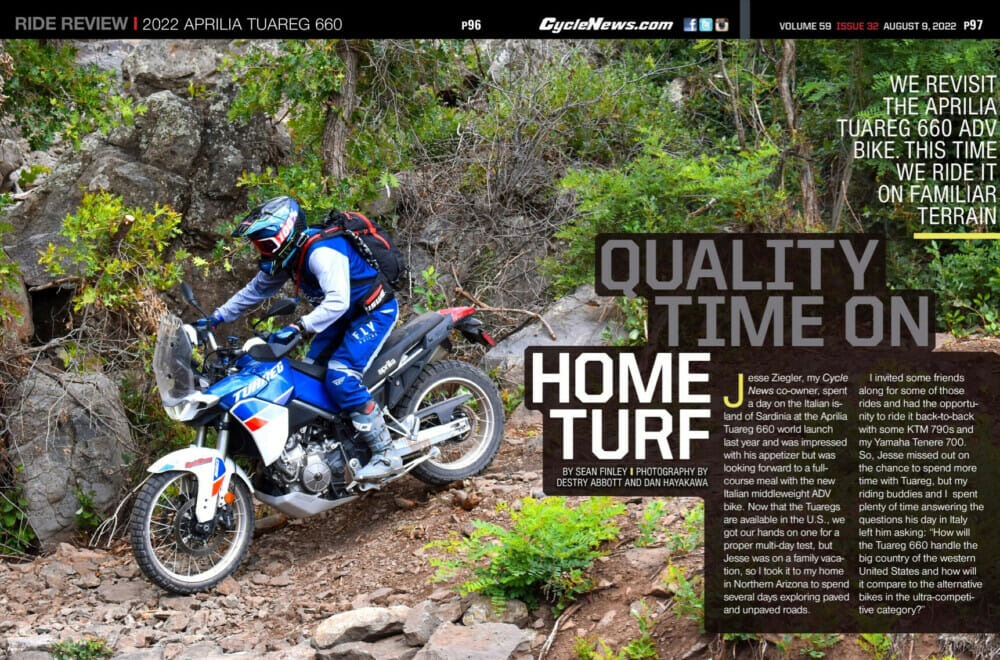Sean Finley | August 11, 2022
We revisit the Aprilia Tuareg 660 ADV bike. This time we ride it on familiar terrain.
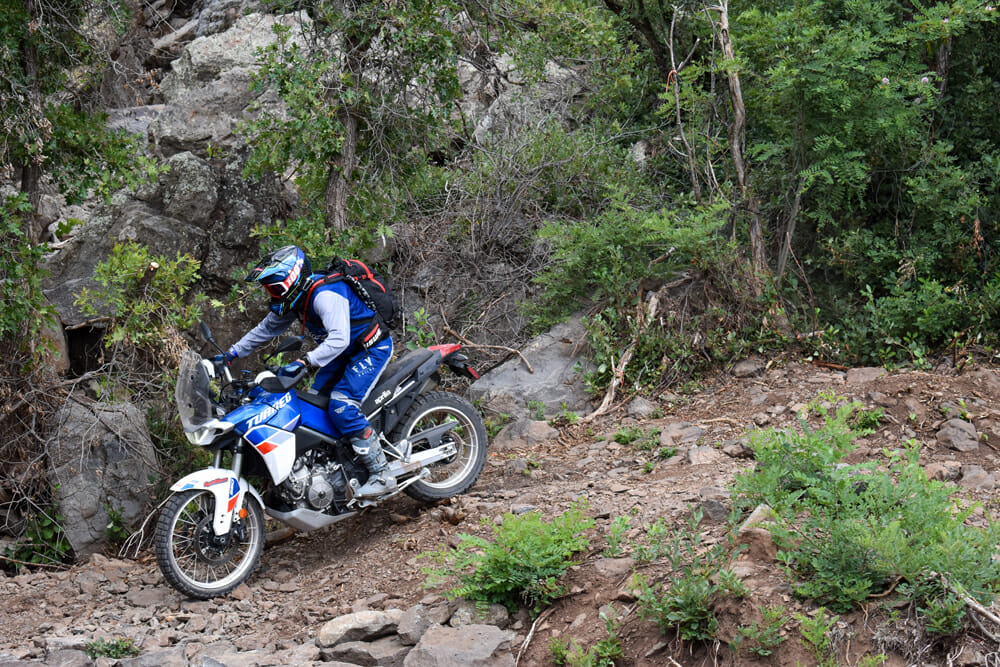
Photography by Destry Abbott and Dan Hayakawa
Jesse Ziegler, my Cycle News co-owner, spent a day on the Italian island of Sardinia at the Aprilia Tuareg 660 world launch last year and was impressed with his appetizer but was looking forward to a full-course meal with the new Italian middleweight ADV bike. Now that the Tuaregs are available in the U.S., we got our hands on one for a proper multi-day test, but Jesse was on a family vacation, so I took it to my home in Northern Arizona to spend several days exploring paved and unpaved roads.
I invited some friends along for some of those rides and had the opportunity to ride it back-to-back with some KTM 790s and my Yamaha Tenere 700. So, Jesse missed out on the chance to spend more time with Tuareg, but my riding buddies and I spent plenty of time answering the questions his day in Italy left him asking: “How will the Tuareg 660 handle the big country of the western United States and how will it compare to the alternative bikes in the ultra-competitive category?”
VIDEO | In-Depth Aprilia Tuareg 660 Ride Review
2022 Aprilia Tuareg 660 Review | Regurgitating Specifications
I will save you the trouble of looking for our previous story to find the specs and throw in a few comparisons to the competitive options.
The Tuareg utilizes the Aprilia 660 twin also found in the RS and Tuono street bikes that have proven to be very popular and competitive on the racetrack. To make this bike world-travel-worthy but day-trip-rip friendly, Aprilia reworked the impressively fun twin-cylinder RS- and Tuono-mounted powerplant significantly. Tuned to 80 horsepower and 70 Nm of torque, the dual-overhead cam, 270-degree firing twin features a load of engine tech and performance. But for Tuareg use, specifically, Aprilia slid in cams with lower lift and a narrower crossing phase of the cam lobes to boost low-end torque character. A unique air-intake system (somewhat obvious considering its perch above the fuel tank) is also added to the engine to emphasize low-rpm torque with longer ducts. The exhaust system follows the low- to medium-rpm performance bias, as does specific ignition mapping.
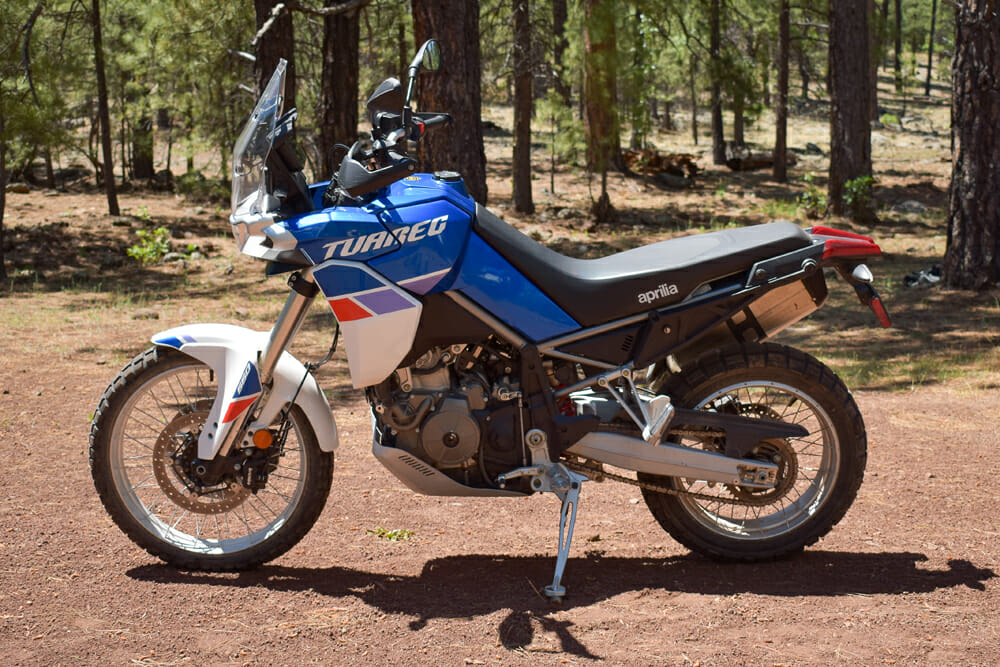 The Tuareg is powered by the same powerplant found in the RS and Tuono street bikes.
The Tuareg is powered by the same powerplant found in the RS and Tuono street bikes.
Aprilia says 75 percent of the 70 Nm of max torque (52.5 Nm) is available at 3000 rpm, and 85 percent is on tap at 4500 rpm with max torque pumped out at 6500 rpm—well below the horsepower peak at 9250 rpm. This pairs well with a Tuareg-specific gearbox featuring a shorter first gear and a two-tooth-smaller front sprocket to deliver torquier grunt right at the crack of the throttle. In the books, this sounds awesome.
Chassis development also went the full ADV-specific route from Aprilia with the Tuareg. Steel and fully welded frame and subframe units combine to create a touring base worthy of max loads. Yeah, the subframe is permanent and not replaceable, something Aprilia thought was worth the compromise of its 460-plus-pound cargo claims. That’s a lot in your panniers. The 660 engine is stressed and connects to the frame via six anchor points, twice as many as the RS and Tuono. The Tuareg’s engine is also kicked back around nine degrees comparatively, a nod to improved tight-terrain handling on paper.
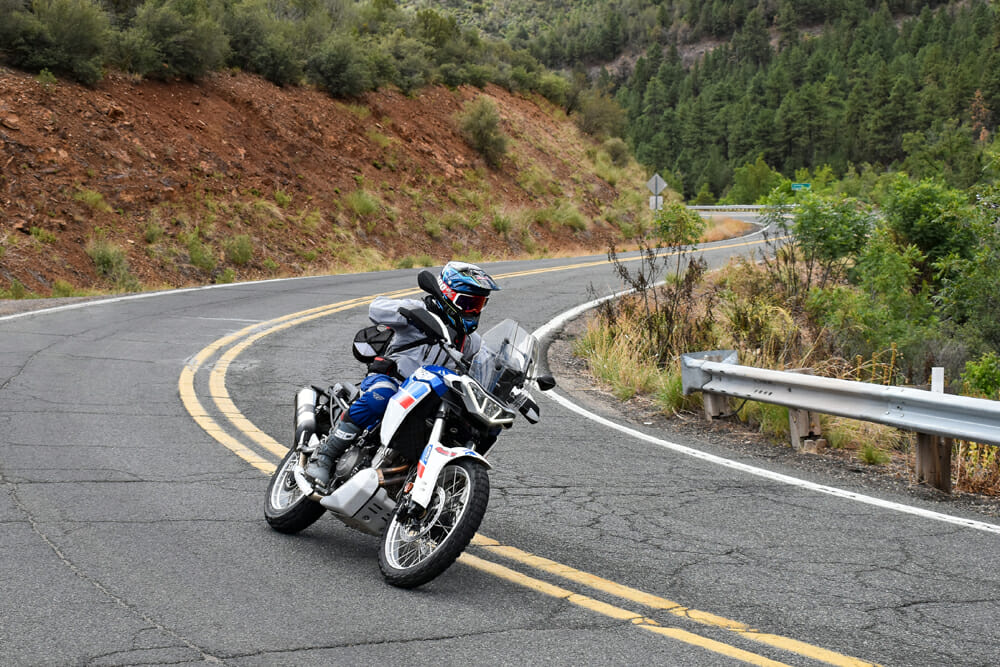 Street or dirt, the Tuareg 660 is a comfortable ride.
Street or dirt, the Tuareg 660 is a comfortable ride.
Fuel capacity and chassis/handling go together in the adventure world. And Aprilia has brought a nice combo of capacity and manners here. Holding 4.75 gallons (18 liters) on board, the Tuareg’s fuel tank slips vertically inside the top frame spars, dropping the weight as low in the chassis as possible and protecting it at the same time. The large “tank” you see on the bike is mostly airbox on the very top, not fuel. Fuel pickup is located right under the seat, at the tank’s lowest point.
Obviously, the Tuareg’s suspension system will have little in common with its sporty in-house cousins. Featuring 9.45 inches (240mm) of travel front and rear, Aprilia equipped the Tuareg nicely for off-road fun with fully adjustable, premium-level front and rear Kayaba units. A linkage-connected shock out back connects to an aluminum swingarm and 43mm fork tubes handle the damping up front.
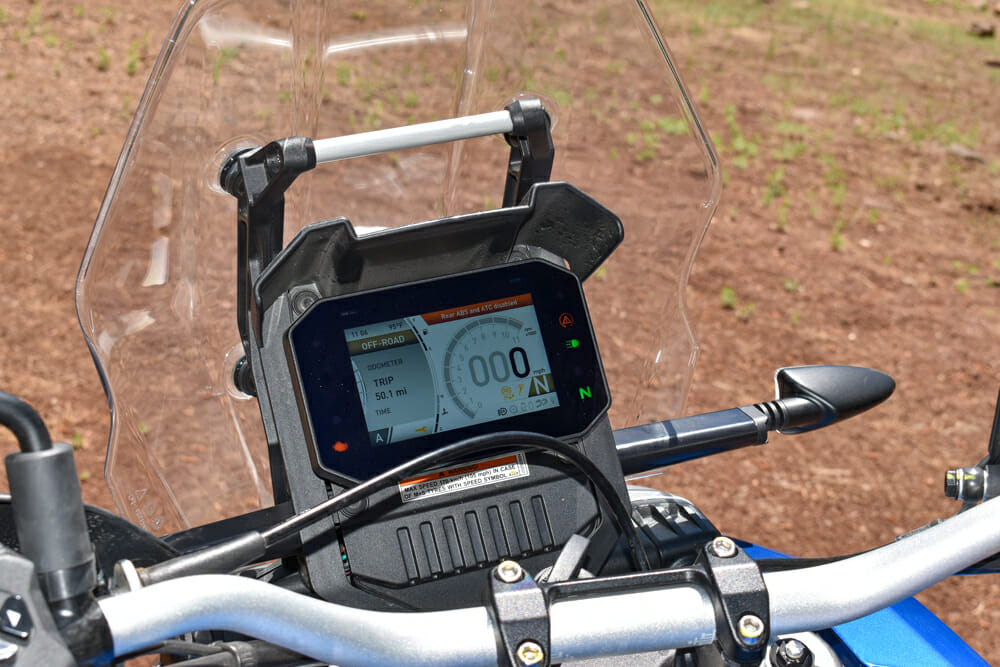 The display looks modern and is easy to read.
The display looks modern and is easy to read.
How about the electronic aids? The Aprilia comes with an impressive suite of their Aprilia Performance Ride Control (APRC) and ABS system tuned for all-road use. APRC on the Tuareg 660 includes traction control, cruise control, engine brake and engine-map adjustments. The Tuareg also features the electronic multimap ride-by-wire throttle system. All these systems combine in four pre-riding modes; Urban, Explore, Off-Road and Individual, with different levels of interaction within the system. Urban mode is for easy riding with maximum safety intervention, Explore mode lets the bike thrill more, Off-Road mode delivers usable power with minimum traction control and rear ABS disabled. It’s worth noting you can manually deactivate both traction control and ABS.
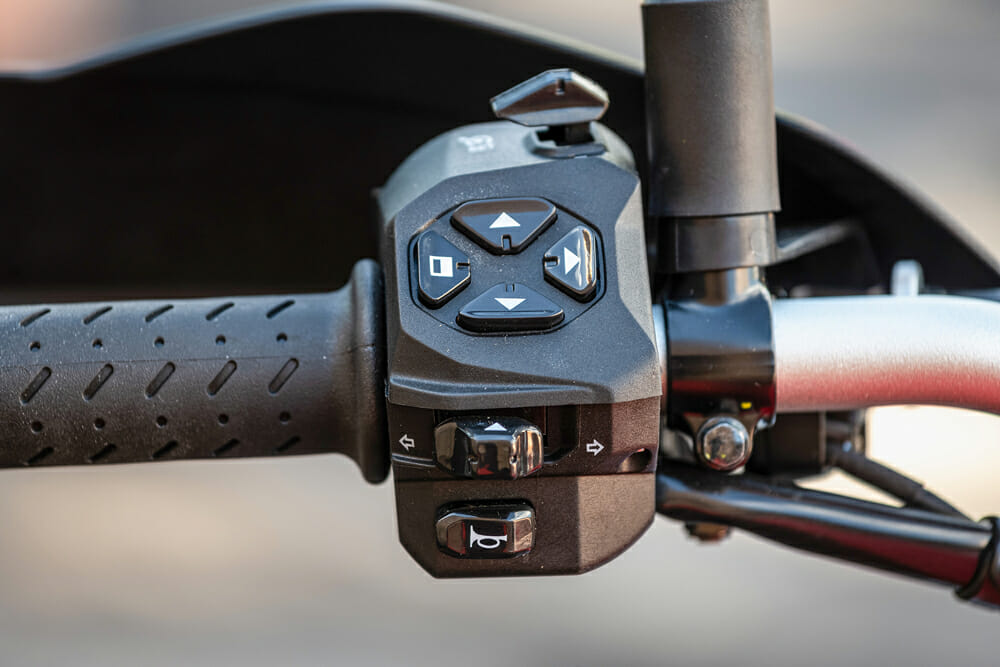 These buttons control an array of electronic aids.
These buttons control an array of electronic aids.
Aprilia claims a wet weight of 450 pounds for the Tuareg 660, and that is precisely what our scales showed. For comparison, our scales indicated 470 pounds for the Yamaha Tenere 700 and 490 pounds for a KTM 890 Adventure R with full fuel tanks.
2022 Aprilia Tuareg 660 Review | How does it handle the large open spaces of the Western U.S.?
Jesse’s first impression of the Tuareg’s excellent street manners was backed up on our local roads. He said, “the Aprilia Tuareg 660 is one of the best-handling on-road adventure motorcycles I’ve ever ridden.” I feel that the KTM 890 is very impressive on the road as well, and the Tuareg feels equally predictable and confidence-inspiring. The seat height is nearly an inch lower than a KTM 890 Adventure R and Yamaha Tenere 700 (33.85 versus 34.60 for the KTM/Yamaha), and that makes it feel like you are sitting a little more “in” the Tuareg versus on the KTM or Yamaha and translates to comfortable street manners. Like Jesse, I felt the Tuareg chassis had far more street performance left on tap than I can comfortably utilize.
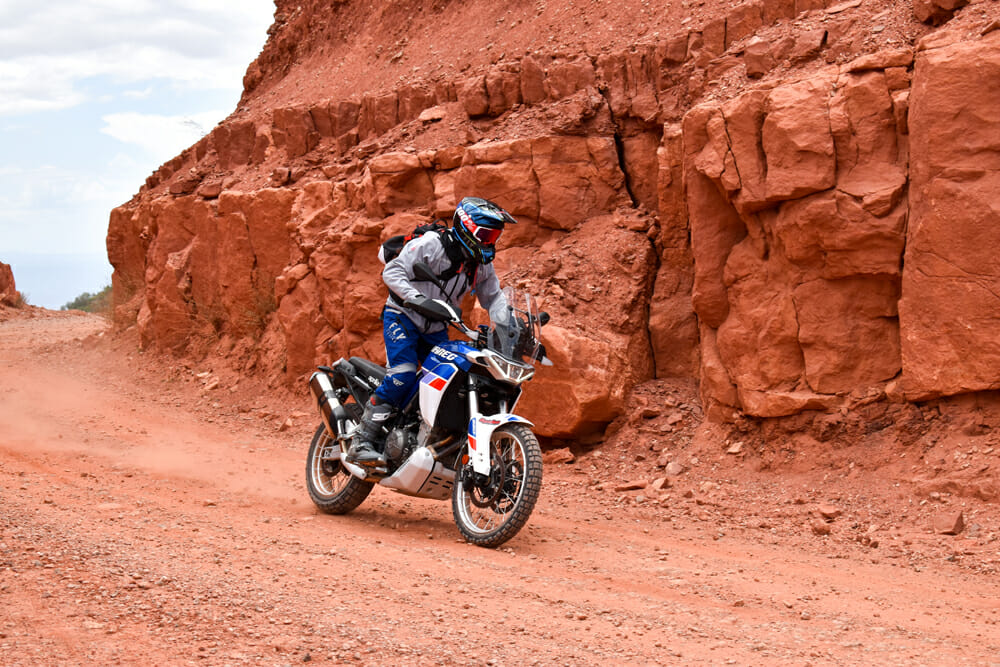 Considering a KTM 890 Adventure R or Yamaha 700 Tenere? Don’t forget the Tuareg.
Considering a KTM 890 Adventure R or Yamaha 700 Tenere? Don’t forget the Tuareg.
The 660 provides plenty of power for me to have fun on the road and is very predictable. The different engine modes help open it up a little, and those of you that like to go fast on the road will probably enjoy wringing its neck a bit but may not be overly impressed with the acceleration. It felt a little more powerful than my Tenere 700, but the larger-displacement KTM 890 Adventure makes the Tuareg feel slow by comparison, as it should. The Tuareg has a claimed 80 horsepower versus 72 for the Tenere and 100 for the KTM 890, and you can feel that on the road. Since I prefer to ride on the dirt, less power is not a problem for me, but your priorities and skill on the street may be different than mine. Even at my mellow street pace, I was missing the optional Aprilia Quick Shift, a $249.95 upgrade I would purchase as it ramps up the fun factor on the road. Yamaha does not offer this on the Tenere, but it is an available option on the KTM 890 Adventure.
One other notable standard feature on the Tuareg is cruise control. This is not available for the Tenere, and I didn’t realize how much I wanted it until I rode the Tuareg (cruise control is standard on the KTM 890 Adventure models).
The seemingly endless dirt roads in Northern Arizona are where we really wanted to put the Tuareg to the test, and that is where we spent most of our riding time. The region has everything from well-groomed dirt roads that you can drive a car down to “roads” and trails that most people don’t want to take an Adventure bike, and we rode as much of it as possible.
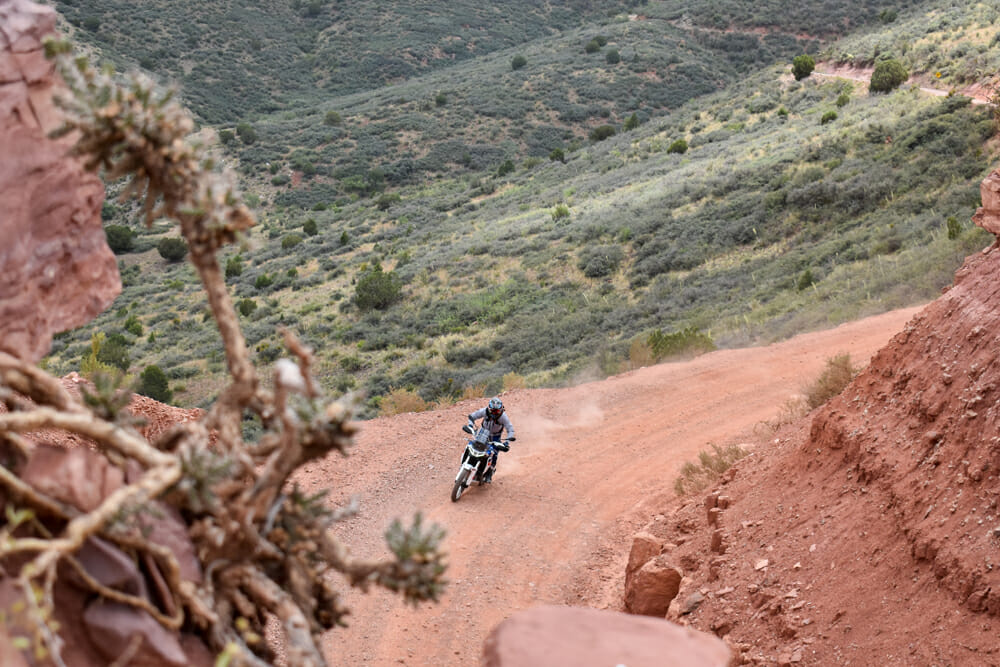
The Tuareg is very comfortable in the dirt, and I am often amazed at the terrain I can comfortably ride on a 450-plus pound ADV bike. The Aprilia provided the feedback and confidence to explore many challenging trails. The Tuareg is comfortable for standing up for long periods, and the traction and cornering on the loose dirt roads are good and allow you to power out of corners nicely. The lower seat height compared to the other ADV bikes we were riding provided a little more confidence in technical terrain.
The motor is predictable and works well on fast dirt roads, and it is also good when the terrain gets more difficult and requires some finesse. The clutch performance critical to slow-speed control and traction was good and consistent. The off-road map setting worked great, and it is easy to change the traction-control settings to your desired level of intervention. Despite the setting, the Tuareg does not have quite as much low-end grunt as the Tenere or KTM 890 Adventure, but it is close and capable.
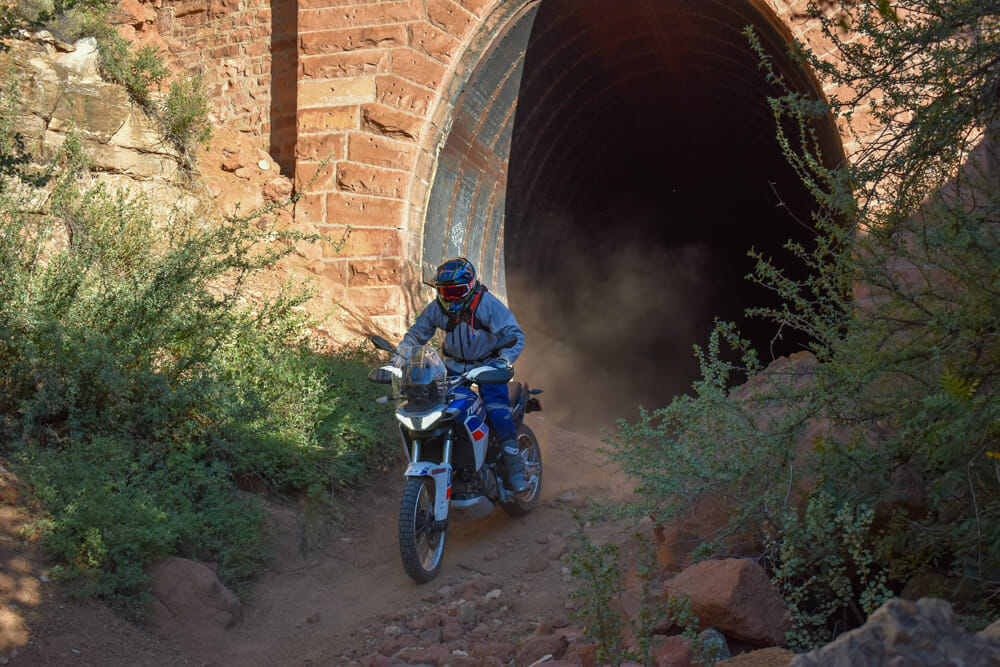
The suspension and chassis are a little harsh on rocky and rough terrain. There is a lot of adjustability with the clickers, but not enough to provide the compliance and comfort we were looking for compared to the other ADV bikes in the class. This is a bit of a tradeoff for street performance as softer suspension is usually not as good on the road due to diving under heavy braking, so again, if street performance is your priority, then you may be perfectly happy with the direction that Aprilia took with the suspension and chassis settings. The flip side to the relatively stiff suspension settings is that it allows for aggressive riding with little fear of blowing through the travel.
To answer the first question from Jesse’s ride on the island of Sardinia, the Tuareg performs well in the big country of the western United States, especially if you prefer twisty asphalt over dirt. The performance is solid on dirt roads, but if you like to veer off onto the more chunky roads and trails, you will likely be looking for plusher suspension settings.
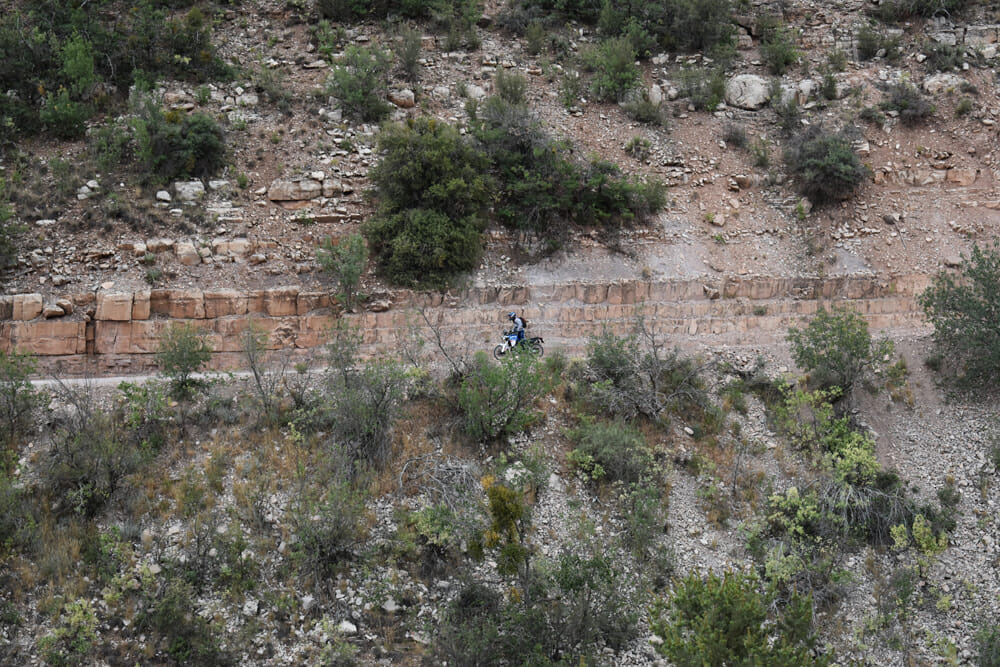
And how does the Tuareg compare to some of the most popular sub-1000cc ADV bikes? This was not a true head-to-head comparison story, but we got to do enough back-to-back riding with the KTM Adventure/Adventure R and Yamaha Tenere to provide some feedback, and, yes, it is a viable option. With a suggested retail of around $12000 (before accessories), it is approximately $2000 more than the Yamaha and $2500 less than the KTM 890 Adventure R. The Tuareg includes a lot of electronic aids that are not available on the Yamaha, but the Yamaha doesn’t really feel that it needs those aids and provides a lot of bang for the buck. The KTM 890 Adventure R is a little more refined in the suspension performance and sets the bar in the dirt but still works well on the street, and the additional engine displacement provides more thrill on the road but is well managed via the electronics package for technical dirt riding. But you don’t get that extra performance for free.
So, the Tuareg holds its own in a tough field of middleweight adventure bikes.CN
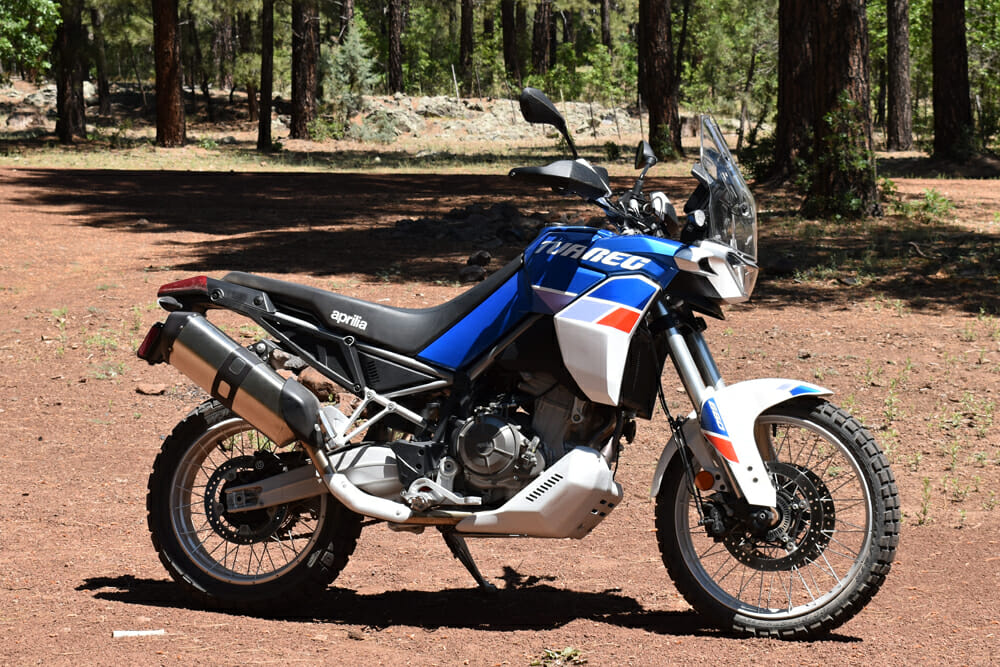
2022 Aprilia Tuareg 660 Specifications
| MSRP: |
$11,999-$12,599 |
| Engine Type: |
Inline, 4-stroke, twin cylinder |
| Valvetrain: |
DOHC, 4-valves per cylinder |
| Bore x Stroke: |
81 x 63.93mm |
| Displacement: |
659cc |
| Compression Ratio: |
13.5:1 |
| Horsepower (claimed): |
80 hp at 9250 rpm |
| Torque (claimed): |
70 Nm at 6500 rpm |
| Fuel System: |
RBW, EFI, w/ two 48mm throttle bodies |
| Ignition: |
Electronic |
| Transmission: |
6-speed w/optional Aprilia Quick Shift (AQS) |
| Clutch: |
Multiplate wet with slipper system |
| Final Drive: |
Chain, 15/42T |
| Electronics: |
APRC Suite: ATC (traction control), AEB (engine brake), AEM (engine maps), ACC (cruise control), 4 Riding modes (Urban, Explore, Off-Road, Individual) |
| Chassis: |
Single unit steel frame |
| Front Suspension: |
43mm Kayaba, fully adjustable |
| Rear Suspension: |
Single Kayaba shock, linkage, aluminum swingarm, fully adjustable |
| Front-Wheel Travel: |
9.4 in |
| Rear-Wheel Travel: |
9.4 in |
| Front Brake: |
300mm dual disc, Brembo, ABS |
| Rear Brake: |
260mm single disc, Brembo, ABS |
| Wheels: |
Spoked w/aluminum drop center |
| Front Tire: |
90/90-21 in., tubeless |
| Rear Tire: |
150/70R-18 in., tubeless |
| Rake x Trail: |
26.7° x 4.46 in. |
| Wheelbase: |
60.04 in. |
| Seat Height: |
33.85 in. |
| Weight (Wet, full fuel tank): |
450 lbs. |
| Fuel Capacity: |
4.75 gal. |
| Colors: |
Indaco Tagelmust, Martian Red, Acid Gold |
